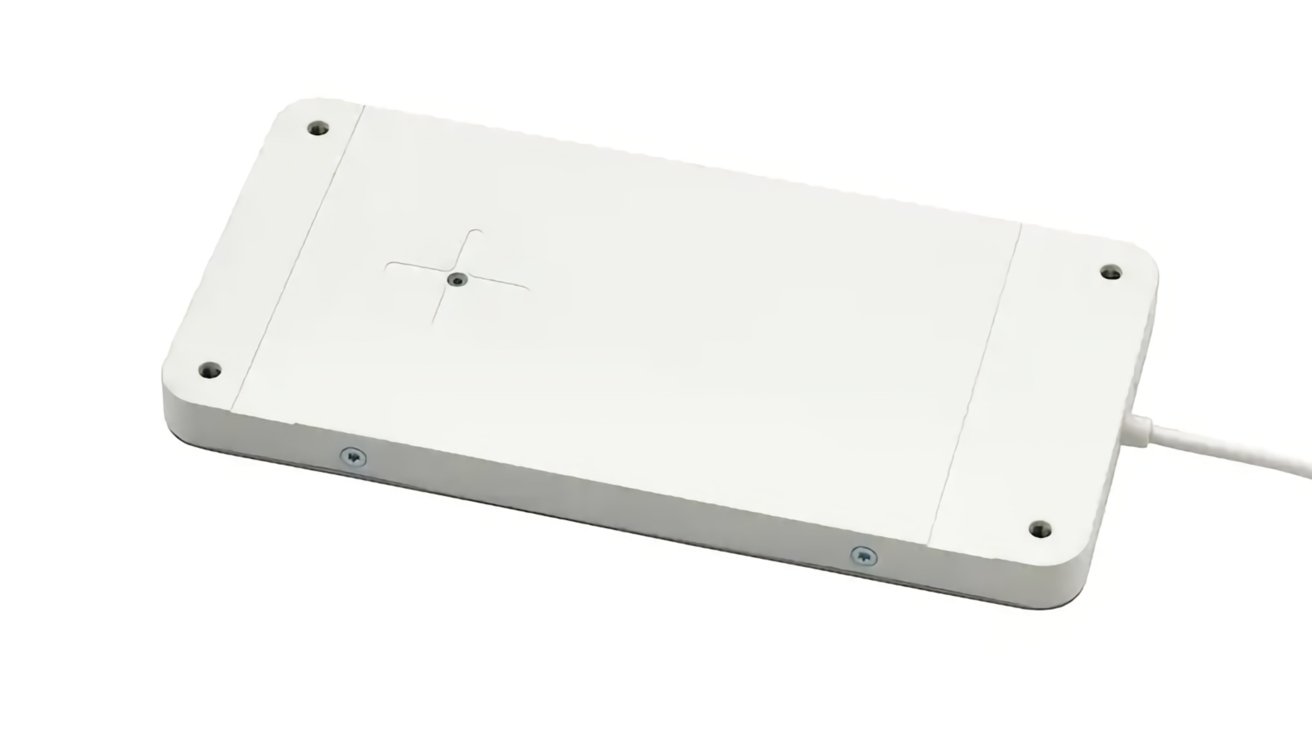Ikea's $40 hidden wireless charger will recharge your iPhone through your desk
Ikea has introduced Sjomarke, a Qi-compatible charger that can turn desks and shelves into a wireless charging point, by being secretly installed underneath the surface.

While there are a number of furniture products and devices with embedded wireless charging coils on the market, there are relatively few options for people who want to add wireless charging to an existing piece of furniture, without using a visible wireless charger. With Ikea's latest release, it aims to solve that with the Sjomarke.
Priced at $39.99, the wireless charging pad measures seven inches by three inches and is encased in plastic. Though not necessarily great to look at, the intent is for it not to be seen in regular use at all.
The idea is to mount the Sjomarke charging pad on the underside of a desk, shelf, or another surface, and for it to automatically charge any wireless charging compatible devices placed and aligned with the unit on the opposite side. A cross sticker is supplied, to denote where on the top of the surface users should place their iPhone for charging.
Mountable with tape or screws, the system requires a desktop or shelf that is at least 8mm to a maximum of 22mm (5/16 inches to 7/8 inches) to work properly and safely. Ikea warns that the charger should not be used directly with an iPhone or other devices, as it is intended for indirect charging through material like wood or plastic.
A six-foot-long cable is supplied for power, as well as the power supply itself.
Ikea lists the Sjomarke Wireless Charger on its website, but it is currently out of stock at all U.S. stores, and is unavailable for home delivery at the time of publication.
The hidden wireless charger is Ikea's latest move in tech. The furniture giant has an extensive range of smart devices, with many including support for HomeKit and AirPlay 2.
Read on AppleInsider

While there are a number of furniture products and devices with embedded wireless charging coils on the market, there are relatively few options for people who want to add wireless charging to an existing piece of furniture, without using a visible wireless charger. With Ikea's latest release, it aims to solve that with the Sjomarke.
Priced at $39.99, the wireless charging pad measures seven inches by three inches and is encased in plastic. Though not necessarily great to look at, the intent is for it not to be seen in regular use at all.
The idea is to mount the Sjomarke charging pad on the underside of a desk, shelf, or another surface, and for it to automatically charge any wireless charging compatible devices placed and aligned with the unit on the opposite side. A cross sticker is supplied, to denote where on the top of the surface users should place their iPhone for charging.
Mountable with tape or screws, the system requires a desktop or shelf that is at least 8mm to a maximum of 22mm (5/16 inches to 7/8 inches) to work properly and safely. Ikea warns that the charger should not be used directly with an iPhone or other devices, as it is intended for indirect charging through material like wood or plastic.
A six-foot-long cable is supplied for power, as well as the power supply itself.
Ikea lists the Sjomarke Wireless Charger on its website, but it is currently out of stock at all U.S. stores, and is unavailable for home delivery at the time of publication.
The hidden wireless charger is Ikea's latest move in tech. The furniture giant has an extensive range of smart devices, with many including support for HomeKit and AirPlay 2.
Read on AppleInsider


Comments
I’m not sure I would like this design, though, because it has to line up perfectly in order to charge. That is why I felt so frustrated with my Belkin charger and why I feel like MagSafe is a game changer for me. I will never again buy a non MagSafe charger.
Magsafe is a game changer. I have those magical pucks EVERYWHERE.
https://translate.google.com/?sl=sv&tl=en&text=sjömärke&op=translate – Google's synthetic voice is close to reality, but the last syllable shouldn't be stressed.
And yes .. sjömärke is a navigation mark at sea. Worth knowing about IKEA (pronounced Ih-ké á) : their names are hilarious to Swedes, because they sometimes have nothing at all to do with the product. And yet .. sometimes they do, but a good example is "Socker", which means "sugar". That series has nothing to do with baking or food at all, unless IKEA implies a connection that goes way back to the early 1900s or 1800s. "Kallax" (a shelf) is an airport in northern Sweden, also known for being one of the well-known brands who make Surströmming (the fermented fish you may have seen in Youtube "surströmming challenge" videos). On the flip side, IKEA has got a shelf called "Hyllis", which is what someone in kindergarten would use in place of the more correct word "hylla" (yet another shelf). Also, some IKEA product names seem to be named after product attributes which the designer thought was fitting. For example, the FIXA series contains a hammer, screws, etc, among other things.
Lastly, in regards to the SJÖMÄRKE product, I was looking at the product picture and think they named it a navigation mark because it looks like a map with an X on it, to mark the spot for charging.
IKEA is a subject in itself. I'll just stop there and go look for the iOS 15 update instead ...